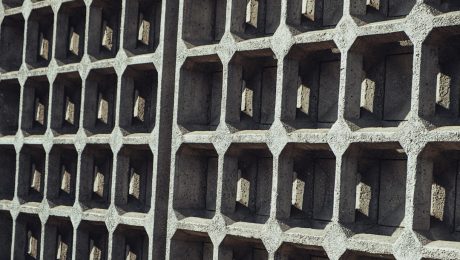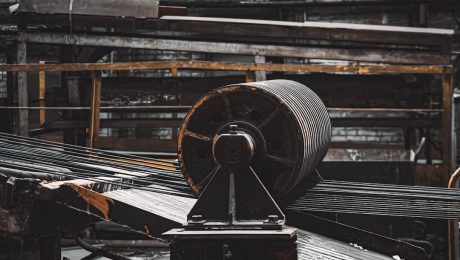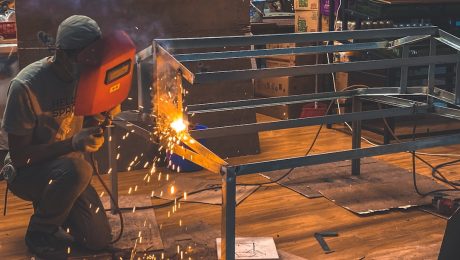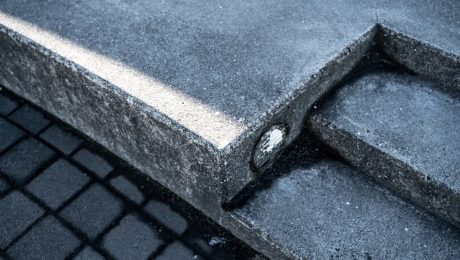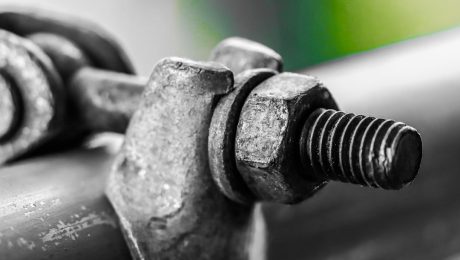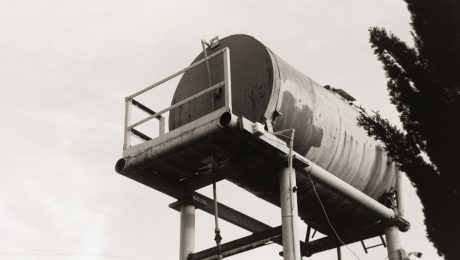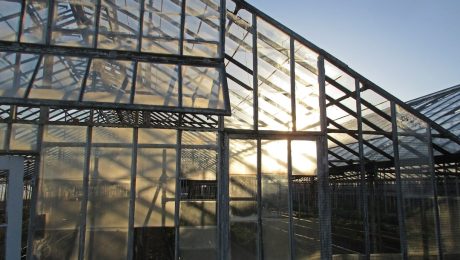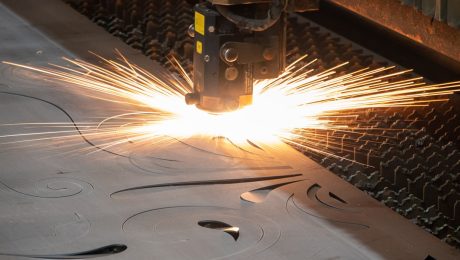In today’s world, noise pollution is a significant concern, impacting productivity, well-being, and even health. Whether you’re designing a recording studio, a bustling office, or a quiet residential space, effective sound control is paramount. This is where acoustic steel profile systems step in, offering a robust and versatile solution for managing sound within a variety of environments.
Understanding the Mechanics of Acoustic Steel Profile Systems
Acoustic steel profile systems are engineered frameworks designed to support and enhance sound absorption and insulation materials. Unlike traditional methods, these systems offer a more precise and customizable approach to sound control. They utilize lightweight yet strong steel profiles, often featuring perforated or specialized designs, to create a framework for the installation of acoustic panels, mineral wool, or other sound-dampening materials. This framework allows for the creation of suspended ceilings, wall systems, or even free-standing acoustic barriers, providing flexibility in design and implementation.
The effectiveness of these systems hinges on several factors, including the type of steel profile used (e.g., thickness, perforation pattern), the choice of sound-absorbing materials, and the overall system design. Properly designed systems can significantly reduce noise transmission and reverberation, leading to a quieter and more comfortable environment.
Choosing the Right Steel Profile for Your Acoustic Needs
The selection of the appropriate steel profile is crucial for the success of an acoustic steel profile system. Several factors need to be considered:
- Thickness and Strength: Thicker profiles offer greater structural integrity, particularly important for supporting heavier sound-absorbing materials or in high-traffic areas.
- Perforation Pattern: Perforated profiles allow for better sound absorption by allowing sound waves to penetrate the material behind the profile. The size and distribution of perforations influence the absorption coefficients at different frequencies.
- Profile Type: Different profile types (e.g., C-channels, Z-channels, T-profiles) offer varying levels of stiffness and load-bearing capacity, influencing the overall system design and suitability for specific applications.
- Material: While steel is the most common material, other metals like aluminum might be considered based on specific project requirements such as corrosion resistance.
Consult with acoustic engineers and suppliers to determine the optimal profile for your specific acoustic needs and environmental conditions.
Installation Techniques and Best Practices for Acoustic Steel Profile Systems
Proper installation is critical to achieving the desired acoustic performance. The installation process typically involves several steps:
- Framework Construction: The steel profiles are precisely positioned and secured to the existing structure using appropriate fasteners.
- Sound Insulation Layer: A layer of sound-insulating material, such as mineral wool or fiberglass, is installed within the framework to further reduce noise transmission.
- Sound Absorption Layer: Acoustic panels or other sound-absorbing materials are affixed to the framework, enhancing the system’s absorption capabilities.
- Finishing Touches: The system is finished with appropriate coverings or finishes, depending on the aesthetic requirements of the space.
Careful attention to detail during installation is essential to prevent sound leaks and ensure optimal performance. Following manufacturer’s instructions and utilizing appropriate tools and techniques are paramount.
Applications of Acoustic Steel Profile Systems: Where Silence Matters
Acoustic steel profile systems find applications in a wide range of settings, including:
- Recording Studios and Music Rooms: Providing exceptional sound isolation and minimizing unwanted reverberation.
- Home Theaters: Creating an immersive and acoustically optimized viewing experience.
- Offices and Commercial Spaces: Reducing noise distractions and improving workplace productivity.
- Industrial Settings: Mitigating noise pollution from machinery and processes.
- Educational Institutions: Creating quieter learning environments in classrooms and libraries.
- Hospitals and Healthcare Facilities: Improving patient comfort and reducing noise-related stress.
The versatility of these systems allows for tailored solutions to meet the unique acoustic demands of each environment.
Benefits of Utilizing Acoustic Steel Profile Systems: Beyond Sound Control
Beyond their primary function of sound control, acoustic steel profile systems offer several additional benefits:
- Durability and Longevity: Steel profiles are robust and resistant to damage, ensuring long-lasting performance.
- Fire Resistance: Steel is inherently fire-resistant, contributing to overall building safety.
- Design Flexibility: The modular nature of these systems allows for customization and integration with various architectural styles.
- Easy Maintenance: The systems are relatively easy to maintain and repair, minimizing downtime.
- Cost-Effectiveness: While the initial investment may be higher than some traditional methods, the long-term benefits in terms of reduced noise pollution and improved productivity can outweigh the cost.
These advantages make acoustic steel profile systems a compelling choice for a wide range of acoustic projects.
In conclusion, acoustic steel profile systems represent a sophisticated and effective approach to sound control. By understanding their mechanics, choosing the right materials, and ensuring proper installation, you can create quieter, more productive, and more comfortable environments. The versatility and long-term benefits of these systems make them a valuable asset in any project where noise control is a priority.
SEO Tags:
- Acoustic Steel Profiles
- Soundproofing Solutions
- Noise Control Systems
- Steel Profile Acoustic Panels
- Acoustic Design and Engineering
Galvanized steel, a ubiquitous material in construction, infrastructure, and manufacturing, owes its widespread use to its exceptional corrosion resistance. But what exactly makes it so durable? This comprehensive guide delves into the science behind galvanized steel’s protective properties, exploring its applications and limitations.
The Science Behind Galvanized Steel’s Corrosion Resistance
Galvanization is a process of applying a protective zinc coating to steel. This coating acts as a sacrificial anode, meaning it preferentially corrodes instead of the underlying steel. This is due to the electrochemical properties of zinc. Zinc is more electropositive than iron (the primary component of steel), meaning it readily loses electrons. When exposed to the environment, zinc reacts with oxygen and moisture, forming a protective layer of zinc oxide and zinc carbonate. This layer prevents further corrosion of the underlying steel, providing long-term protection.
The thickness of the zinc coating is crucial. Heavier coatings offer superior and longer-lasting protection. The type of galvanizing process also plays a significant role, with hot-dip galvanizing generally providing a thicker, more robust coating than electro-galvanizing.
Hot-Dip Galvanizing vs. Electro-Galvanizing: A Detailed Comparison
Hot-dip galvanizing involves immersing the steel into a molten zinc bath. This results in a thicker, more uniform, and generally more durable zinc coating compared to electro-galvanizing. The coating is metallurgical bonded to the steel substrate, ensuring excellent adhesion and longevity. However, it’s a more expensive process.
Electro-galvanizing, on the other hand, is an electrolytic process where zinc is deposited onto the steel through an electric current. This method is faster and cheaper than hot-dip galvanizing, but typically produces a thinner coating with potentially lower corrosion resistance, particularly in harsh environments. The choice between the two methods depends on the application’s specific requirements and budget constraints.
Factors Affecting the Lifespan of Galvanized Steel
While galvanized steel offers excellent corrosion resistance, its lifespan isn’t indefinite. Several factors can influence its longevity:
- Environmental conditions: Exposure to highly corrosive environments, such as saltwater or industrial atmospheres with high levels of pollutants, can significantly accelerate corrosion. Climate also plays a role; areas with high humidity and frequent rainfall will see faster degradation than dry, arid regions.
- Coating thickness: As mentioned earlier, thicker zinc coatings provide better protection.
- Surface preparation: Proper surface preparation before galvanizing is essential. Any rust, mill scale, or other contaminants on the steel surface can impede the adhesion of the zinc coating and compromise its effectiveness.
- Damage to the coating: Scratches, cuts, or other damage to the zinc coating can expose the underlying steel to corrosion. This is why proper handling and installation are crucial.
- Type of steel substrate: The underlying steel’s composition and quality can also affect the overall performance of the galvanized steel.
Applications of Galvanized Steel: Where it Excels
The remarkable corrosion resistance of galvanized steel makes it ideal for a wide range of applications, including:
- Construction: Roofing, cladding, structural components, and fencing.
- Infrastructure: Bridges, guardrails, and highway signs.
- Automotive: Body panels, bumpers, and other components.
- Manufacturing: Storage tanks, pipelines, and other industrial equipment.
- Agricultural: Fencing, livestock housing, and equipment.
Its versatility and durability make it a cost-effective solution for many applications where corrosion protection is paramount.
Maintaining and Extending the Lifespan of Galvanized Steel
While galvanized steel is inherently durable, proper maintenance can extend its lifespan significantly. Regular inspections for damage to the zinc coating are important. Minor scratches can be touched up with zinc-rich paint to prevent rust. In areas with particularly harsh environments, more frequent inspections and maintenance may be necessary.
Avoiding damage during handling and installation is also crucial. Proper storage to prevent scratching and abrasion is key to preserving the integrity of the zinc coating. In some cases, the application of protective coatings on top of the galvanized layer can further enhance its corrosion resistance.
In conclusion, the corrosion resistance of galvanized steel is a result of a well-understood electrochemical process. By understanding the factors influencing its lifespan and employing proper maintenance practices, we can maximize the longevity and effectiveness of this versatile and crucial material.
Tags: Galvanized steel, corrosion resistance, zinc coating, hot-dip galvanizing, electro-galvanizing, steel protection
The scrap metal market, a dynamic and often unpredictable arena, plays a crucial role in global resource management and industrial production. From discarded appliances to demolished buildings, the materials we deem “waste” hold significant economic and environmental value. Understanding the nuances of this market is key for businesses, investors, and environmentally conscious individuals alike. This comprehensive guide will navigate the complexities of the scrap metal market, exploring its key drivers, challenges, and future prospects.
Fluctuating Prices: Understanding the Dynamics of Scrap Metal Values
Scrap metal prices are notoriously volatile, influenced by a complex interplay of factors. Global supply and demand are paramount. A surge in construction activity, for instance, can significantly increase demand for steel scrap, driving prices upward. Conversely, a slowdown in manufacturing can lead to a surplus, depressing prices. The type of metal also plays a crucial role. Ferrous metals like steel and iron typically have a larger market and more stable (though still fluctuating) pricing compared to non-ferrous metals like aluminum, copper, and brass, which are influenced by specific industrial demands and technological advancements. Economic conditions, both globally and domestically, also exert significant pressure. Recessions often lead to lower scrap metal prices due to reduced industrial activity. Finally, geopolitical events and international trade policies can create unexpected shifts in the market, emphasizing the need for constant monitoring and analysis.
The Recycling Process: From Scrap to Resource
The journey of scrap metal from discarded material to usable resource is a multi-stage process involving collection, processing, and refining. Collection often begins with individual scrap yards or junkyards, which accumulate materials from various sources. These yards then sort the scrap by type and grade, ensuring the quality and purity of the materials for further processing. Larger scale operations may involve specialized equipment for shredding, baling, and separating different metals. The processed scrap is then transported to smelters or refineries, where it undergoes further processing to remove impurities and transform it into usable metal forms like ingots or billets. This recycling process not only conserves natural resources but also significantly reduces the environmental impact of mining and manufacturing new metals.
Key Players in the Scrap Metal Market: A Landscape Analysis
The scrap metal market involves a diverse range of players, each with its unique role. Scrap yards and recycling centers form the foundation, collecting and processing the raw materials. These businesses range from small, independent operators to large, multinational corporations. Then there are the brokers and traders, who facilitate the buying and selling of scrap metal between various parties, often connecting scrap yards with smelters and manufacturers. Smelters and refineries are responsible for transforming the scrap into usable metal forms. Finally, manufacturers and industrial consumers are the end users, purchasing the refined metal for their production processes. Understanding the dynamics and relationships between these players is crucial for navigating the intricacies of the market.
Emerging Trends and Future Predictions: The Scrap Metal Market’s Trajectory
The scrap metal market is constantly evolving, driven by technological advancements, environmental regulations, and shifting global economic landscapes. One prominent trend is the increasing demand for high-quality scrap metal, leading to improvements in sorting and processing technologies. The rise of electric vehicles and renewable energy technologies is also creating new opportunities for the market, particularly for the recycling of battery components and specialized metals. Moreover, stricter environmental regulations are placing greater emphasis on responsible recycling practices, leading to increased investment in sustainable technologies and infrastructure. Looking ahead, the scrap metal market is expected to experience continued growth, driven by the growing global population, increasing industrialization, and a greater focus on circular economy principles. However, challenges remain, including fluctuating commodity prices, geopolitical instability, and the need for improved infrastructure in developing countries.
Investing in the Scrap Metal Market: Opportunities and Risks
The scrap metal market presents both opportunities and risks for investors. While the market can be profitable, its volatility requires careful consideration. Investing in established scrap metal recycling companies or specialized ETFs can provide exposure to the market’s growth potential. However, thorough due diligence is crucial, considering factors such as market cycles, environmental regulations, and the financial health of individual companies. Diversification within the portfolio is also recommended to mitigate risks associated with price fluctuations. Understanding the various factors influencing scrap metal prices, as discussed earlier, is paramount for making informed investment decisions. Furthermore, staying abreast of technological advancements and environmental policies within the industry can provide a competitive edge.
The scrap metal market is a complex and dynamic ecosystem. By understanding the factors influencing prices, the recycling process, the key players, and future trends, individuals and businesses can navigate this market effectively and capitalize on its opportunities. Its importance in resource management and environmental sustainability makes it a sector worth close attention.
The European Union’s CE marking is a crucial symbol indicating a product’s conformity with EU health, safety, and environmental protection legislation. For steel manufacturers and suppliers, understanding the CE certification process is paramount for accessing the vast European market. This comprehensive guide will unravel the complexities of obtaining CE certification for your steel products.
1. Understanding the CE Marking and its Relevance to Steel
The CE marking isn’t a quality mark; it’s a declaration of conformity. It signifies that the manufacturer has met all the essential requirements set by relevant EU directives and harmonized standards for the specific product. For steel, this often relates to structural applications within the construction industry, but can also extend to other sectors depending on the steel’s intended use. The absence of a CE mark can lead to significant legal repercussions, including fines and market exclusion. It’s essential to understand that the CE marking process isn’t a one-size-fits-all solution; the specific requirements vary depending on the type of steel product and its intended application. For instance, reinforcing steel bars will have different certification requirements compared to steel sheets used in automotive manufacturing.
2. Key European Standards and Directives for Steel Certification
The foundation of CE certification for steel lies in adherence to relevant European standards (EN standards) and directives. These standards specify the technical requirements a steel product must meet to ensure safety and performance. Commonly referenced standards for steel include those related to mechanical properties (tensile strength, yield strength, elongation), chemical composition, and dimensional tolerances. The specific standards will depend heavily on the type of steel and its application. For example, structural steel used in buildings will need to comply with EN 10025, while steel for pressure vessels might require adherence to EN 10216-2. These standards are regularly updated, so staying abreast of the latest revisions is critical. Additionally, the relevant EU directive will dictate the specific conformity assessment procedures that must be followed to obtain the CE marking. This often involves testing by a Notified Body.
3. The Role of Notified Bodies in Steel CE Certification
Notified Bodies are independent organizations designated by a Member State to assess the conformity of products with EU legislation. Their involvement is crucial for certain conformity assessment procedures, particularly for high-risk products. For steel, a Notified Body might be involved in factory inspections, product testing, and the verification of the manufacturer’s quality management system. Choosing the right Notified Body is crucial. You should look for a body with relevant expertise in steel products and a good reputation for impartiality and competence. The Notified Body will conduct audits and inspections to verify that your manufacturing processes and products meet the required standards. Their involvement adds credibility and assurance to the CE marking, providing confidence to customers and regulators.
4. The Process of Obtaining CE Certification for Steel Products
The steps involved in obtaining CE certification for steel products vary depending on the specific product and the chosen conformity assessment procedure. However, a typical process includes:
- Product Identification and Classification: Accurately identifying the type of steel product and its intended application is crucial to determine the relevant standards and directives.
- Compliance with Relevant Standards: Ensuring that the steel product meets all the essential requirements specified in the applicable EN standards.
- Internal Production Control: Implementing a robust quality management system (often ISO 9001) to ensure consistent product quality.
- Testing and Verification: Undertaking necessary testing and verification procedures, either internally or through a Notified Body.
- Declaration of Conformity: Preparing and signing a declaration of conformity, affirming that the product meets all the relevant requirements.
- CE Marking: Affixing the CE marking to the product and its packaging.
- Technical File Maintenance: Maintaining a comprehensive technical file documenting the conformity assessment process.
5. Maintaining Compliance and Ongoing Obligations
Obtaining CE certification isn’t a one-off event. Manufacturers have ongoing obligations to maintain compliance. This includes:
- Regular Internal Audits: Conducting regular internal audits to ensure the continued effectiveness of the quality management system.
- Monitoring of Standards Updates: Staying informed about updates and revisions to relevant EN standards and EU directives.
- Record Keeping: Maintaining accurate records of all testing, inspections, and other conformity assessment activities.
- Responding to Market Surveillance: Cooperating with market surveillance authorities in case of any inspections or inquiries.
- Product Traceability: Maintaining robust traceability systems to ensure that products can be easily identified and tracked throughout their lifecycle.
Failure to meet these ongoing obligations can result in the withdrawal of the CE marking and potential legal sanctions.
Navigating the CE certification process for steel products can be challenging, but understanding the requirements and engaging with experienced professionals can significantly simplify the process and ensure compliance. Remember that the specific requirements will depend on the type of steel product and its intended use, making thorough research and professional guidance essential.
Tags: CE marking, steel certification, steel CE marking, construction steel, structural steel
Wind energy is rapidly becoming a cornerstone of sustainable energy production, and at the heart of every wind turbine lies a complex network of precisely engineered components. Among these, steel profiles play a truly indispensable role, contributing significantly to the structural integrity, efficiency, and longevity of these colossal machines. This post delves into the multifaceted world of steel profiles in wind energy projects, exploring their applications, manufacturing processes, advantages, challenges, and future prospects.
1. The Diverse Applications of Steel Profiles in Wind Turbines
Steel profiles aren’t just one size fits all; their versatility is key to their widespread use in wind turbine construction. They are employed in a variety of critical components, each demanding specific properties:
- Towers: The towering structures supporting the nacelle and rotor are often constructed using tubular steel profiles, chosen for their high strength-to-weight ratio and resistance to bending and buckling under extreme wind loads. These profiles, frequently hot-rolled, are meticulously welded and assembled to create the robust tower framework.
- Nacelles: The nacelle, housing the gearbox, generator, and other vital components, also relies heavily on steel profiles. These provide a rigid and protective structure, often incorporating box sections and other complex shapes to withstand the dynamic forces experienced during operation.
- Rotor Blades: While not directly made of steel profiles, the internal support structures of many rotor blades utilize steel profiles to maintain their aerodynamic shape and withstand centrifugal forces during rotation. These internal structures often require high-strength, lightweight steel alloys.
- Foundations: The foundation, anchoring the entire turbine to the ground, frequently employs steel profiles as part of a reinforced concrete structure. These profiles provide additional strength and stability, ensuring the turbine remains securely grounded even in harsh weather conditions.
- Internal Bracing: Within the tower and nacelle, numerous smaller steel profiles act as bracing elements, enhancing stiffness and preventing vibrations. These are often cold-formed profiles, offering flexibility in design and manufacturing.
2. Manufacturing Processes for Wind Turbine Steel Profiles
The production of steel profiles for wind turbines requires stringent quality control and precision engineering. Common manufacturing methods include:
- Hot Rolling: This process involves passing heated steel billets through a series of rollers to shape them into the desired profile. Hot rolling is ideal for producing large, strong profiles used in tower construction.
- Cold Forming: Cold forming involves shaping steel at room temperature, allowing for greater precision and the creation of complex shapes. This method is often used for smaller bracing elements and profiles within the nacelle.
- Welding: Welding is crucial for joining individual steel profiles to create larger structures. Advanced welding techniques, such as robotic welding, ensure high-quality, consistent welds essential for structural integrity.
- Surface Treatments: To enhance durability and protect against corrosion, steel profiles are often subjected to surface treatments like galvanizing, painting, or powder coating. These coatings extend the lifespan of the turbine and minimize maintenance requirements.
3. Advantages of Using Steel Profiles in Wind Energy
The widespread adoption of steel profiles in wind turbine construction stems from several key advantages:
- High Strength-to-Weight Ratio: Steel offers exceptional strength relative to its weight, crucial for minimizing the overall mass of the turbine and reducing material costs.
- Durability and Longevity: Properly treated steel profiles exhibit excellent resistance to corrosion and wear, ensuring a long operational lifespan for the wind turbine.
- Design Flexibility: Steel profiles can be produced in a vast array of shapes and sizes, accommodating the diverse design requirements of different turbine models.
- Cost-Effectiveness: While initial material costs might be significant, the long-term durability and reduced maintenance requirements of steel contribute to overall cost-effectiveness.
- Recyclability: Steel is a highly recyclable material, promoting sustainability and reducing environmental impact at the end of the turbine’s lifespan.
4. Challenges in Utilizing Steel Profiles for Wind Turbine Construction
Despite its advantages, using steel profiles in wind turbine construction presents some challenges:
- Transportation and Logistics: Transporting large, heavy steel profiles to remote wind farm locations can be logistically complex and expensive.
- Corrosion: Even with protective coatings, corrosion remains a potential concern, particularly in harsh coastal environments. Regular inspection and maintenance are crucial.
- Fatigue: The cyclical loading experienced by wind turbines can lead to fatigue failure in steel components over time. Careful design and material selection are essential to mitigate this risk.
- Manufacturing Complexity: Producing complex steel profiles for specific applications can be technically challenging and require specialized equipment.
- Cost Fluctuations: The price of steel can fluctuate significantly, impacting the overall cost of wind turbine construction.
5. Future Trends in Steel Profiles for Wind Energy
The future of steel profiles in wind energy is marked by innovation and a focus on enhancing performance and sustainability:
- Advanced Steel Alloys: The development of high-strength, lightweight steel alloys will enable the construction of even taller and more efficient wind turbines.
- Optimized Designs: Advanced computational modeling and simulation techniques are being used to optimize the design of steel profiles, maximizing strength and minimizing weight.
- Sustainable Manufacturing Practices: A greater emphasis on sustainable manufacturing processes, including reduced energy consumption and minimized waste, is expected.
- Smart Monitoring Systems: The integration of smart sensors and monitoring systems will allow for real-time assessment of the structural integrity of steel components, enabling proactive maintenance.
- Recycled Steel Utilization: Increased use of recycled steel in wind turbine construction will further enhance the sustainability of this renewable energy source.
In conclusion, steel profiles are fundamental to the successful deployment of wind energy. Their versatility, strength, and durability make them an essential material in the ongoing quest for cleaner, more sustainable energy solutions. Addressing the challenges and embracing the innovative trends discussed above will pave the way for even larger, more efficient, and environmentally responsible wind energy projects in the future.
Tags: Steel profiles, wind energy, wind turbines, steel construction, renewable energy
Stainless steel. The name itself conjures images of durability, elegance, and lasting quality. But with so many different types and grades available, navigating the world of stainless steel products can feel overwhelming. This comprehensive guide aims to demystify stainless steel, helping you understand its various forms, applications, and how to best care for your stainless steel possessions.
Understanding Stainless Steel Grades and Their Properties
The key to understanding stainless steel lies in its composition. Different grades are created by varying the percentages of chromium, nickel, molybdenum, and other alloying elements. This variation directly impacts the steel’s properties, including corrosion resistance, strength, and workability. Here’s a breakdown of some common grades:
- 304 Stainless Steel (18/8): This is the most common grade, offering excellent corrosion resistance and good strength. It’s widely used in kitchenware, appliances, and architectural applications.
- 316 Stainless Steel (18/10): Containing higher levels of molybdenum, 316 stainless steel boasts superior resistance to corrosion, particularly in harsh environments like marine settings. It’s often found in medical instruments and outdoor furniture.
- 430 Stainless Steel: A less expensive option, 430 stainless steel offers good corrosion resistance but is less strong than 304 or 316. It’s commonly used in automotive parts and some kitchen appliances.
- 410 Stainless Steel: Known for its high strength and hardness, 410 stainless steel is often used in cutlery and tools where durability is paramount. However, its corrosion resistance is lower than that of 304 and 316.
Choosing the right grade depends entirely on the intended application. Consider the environment the product will be exposed to and the required level of strength and corrosion resistance.
Common Applications of Stainless Steel Products
The versatility of stainless steel makes it suitable for a vast array of applications, spanning various industries and everyday life. Here are some notable examples:
- Kitchenware: Pots, pans, cutlery, sinks, and appliances are frequently made from stainless steel due to its durability, ease of cleaning, and resistance to staining.
- Medical Instruments: Its biocompatibility and resistance to corrosion make stainless steel ideal for surgical instruments, implants, and other medical devices.
- Architectural and Construction: Stainless steel is used in building facades, roofing, railings, and structural components for its strength, longevity, and aesthetic appeal.
- Automotive Industry: Exhaust systems, body panels, and other components often utilize stainless steel for its corrosion resistance and high strength-to-weight ratio.
- Food Processing Equipment: Stainless steel’s hygienic properties make it a preferred material for food processing equipment, ensuring safety and preventing contamination.
This is just a glimpse into the wide range of applications for stainless steel. Its adaptability and superior properties continue to drive its use across numerous sectors.
Maintaining and Cleaning Your Stainless Steel Products
Proper care ensures your stainless steel products maintain their beauty and functionality for years to come. Here are some essential cleaning and maintenance tips:
- Regular Cleaning: Wipe down surfaces with a soft cloth and mild detergent after each use. Avoid abrasive cleaners or scouring pads, which can scratch the surface.
- Dealing with Stains: Most stains can be removed with a paste of baking soda and water. For stubborn stains, consider a specialized stainless steel cleaner.
- Preventing Water Spots: Dry your stainless steel surfaces thoroughly after cleaning to prevent water spots. A microfiber cloth works best.
- Avoiding Harsh Chemicals: Avoid using bleach, ammonia, or other harsh chemicals, as they can damage the finish.
Following these simple steps will help preserve the appearance and longevity of your stainless steel investments.
Choosing the Right Stainless Steel Product for Your Needs
With the vast array of stainless steel products available, selecting the right one requires careful consideration of several factors:
- Intended Use: Determine the primary function of the product and the environment it will be used in. This will help you select the appropriate grade of stainless steel.
- Durability Requirements: Consider the level of strength and resistance to wear and tear needed for the product’s intended use.
- Aesthetic Preferences: Stainless steel comes in various finishes, from brushed to polished. Choose a finish that complements your style and the overall design.
- Budget: Different grades of stainless steel vary in price. Balance your needs with your budget to find the most cost-effective solution.
By carefully evaluating these factors, you can make an informed decision and choose the perfect stainless steel product to meet your specific requirements.
The Future of Stainless Steel: Innovations and Trends
The world of stainless steel is constantly evolving. Research and development are leading to innovations in both material composition and manufacturing processes. Some key trends include:
- Improved Corrosion Resistance: Researchers are constantly developing new alloys with even greater resistance to corrosion, expanding the applications of stainless steel in challenging environments.
- Sustainable Production Methods: The focus on sustainability is driving the development of more environmentally friendly production methods for stainless steel.
- Advanced Manufacturing Techniques: Techniques like 3D printing are opening up new possibilities for creating complex and customized stainless steel products.
- Lightweight Stainless Steels: The development of lighter-weight stainless steels is crucial for applications where weight reduction is essential, such as in the aerospace industry.
These innovations promise to further enhance the versatility and appeal of stainless steel, solidifying its position as a leading material for countless applications.
This comprehensive guide provides a foundation for understanding and appreciating the world of stainless steel products. Remember to consider the factors discussed above when making your purchasing decisions to ensure you get the best possible product for your needs.
The petroleum industry relies heavily on a robust and reliable pipeline network for the safe and efficient transportation of crude oil, natural gas, and refined products. The heart of this network? Pipes. Understanding the intricate specifications governing these pipes is critical for ensuring safety, preventing environmental damage, and maintaining operational efficiency. This comprehensive guide delves into the key aspects of pipe specifications within the petroleum industry.
1. Material Selection: The Foundation of Pipeline Integrity
The choice of pipe material is paramount, dictated by factors such as the transported fluid (crude oil, natural gas, refined products), operating pressure and temperature, environmental conditions (soil corrosion, temperature variations), and the pipeline’s lifespan. Common materials include:
- Carbon Steel (API 5L Grades): The most widely used material due to its strength, weldability, and cost-effectiveness. API 5L specifies various grades (X42, X52, X65, X70, and higher) based on their minimum yield strength. Higher grade numbers indicate greater strength and pressure resistance.
- Stainless Steel: Employed in applications requiring high corrosion resistance, often in environments with high salinity or exposure to corrosive chemicals. Specific grades are selected based on the corrosive environment.
- High-Strength Low-Alloy (HSLA) Steel: Offers a balance between strength and weldability, often used in high-pressure pipelines. These steels often contain elements like manganese, chromium, and molybdenum to enhance strength and corrosion resistance.
- Polyethylene (PE): Used extensively in low-pressure applications and for smaller diameter pipelines, particularly for gas distribution networks. PE pipes offer excellent corrosion resistance and flexibility.
Material selection involves rigorous testing and quality control to ensure compliance with industry standards and regulations.
2. Industry Standards and Specifications: Ensuring Quality and Safety
Standardization is crucial in the petroleum industry to guarantee the quality, safety, and interoperability of pipeline components. Several key standards govern pipe specifications:
- API 5L: The American Petroleum Institute Standard 5L covers the requirements for line pipe used in oil and gas pipelines. It details specifications for various steel grades, manufacturing processes, testing procedures, and marking requirements.
- ASTM Standards: The American Society for Testing and Materials (ASTM) provides a wide range of standards related to pipe materials, including chemical composition, mechanical properties, and testing methods. These standards often complement API 5L.
- ISO Standards: International Organization for Standardization (ISO) standards offer globally recognized specifications for pipe materials and manufacturing processes, promoting consistency and interoperability across international projects.
Adherence to these standards is mandatory and subject to rigorous audits and inspections throughout the pipeline lifecycle.
3. Pressure Rating and Wall Thickness: Withstanding Operational Demands
The pressure rating of a pipe, often expressed in pounds per square inch (psi) or megapascals (MPa), dictates the maximum internal pressure the pipe can safely withstand. The wall thickness is directly related to the pressure rating; higher pressure ratings require thicker walls. Factors influencing pressure rating and wall thickness include:
- Operating Pressure: The expected pressure of the transported fluid within the pipeline.
- Pipe Diameter: Larger diameter pipes generally require thicker walls for the same pressure rating.
- Material Strength: Higher strength materials allow for thinner walls at the same pressure rating.
- Safety Factor: A safety factor is incorporated to account for unforeseen circumstances and ensure a margin of safety.
Accurate calculation of pressure rating and wall thickness is crucial for preventing failures and ensuring the safe operation of the pipeline.
4. Corrosion Protection: Extending Pipeline Lifespan
Corrosion is a significant threat to pipeline integrity, leading to leaks, failures, and environmental damage. Several methods are employed to protect pipes from corrosion:
- Coating: Applying protective coatings, such as epoxy or polyethylene, to the pipe’s external surface creates a barrier against moisture and corrosive substances.
- Cathodic Protection: This electrochemical method involves applying a negative electrical potential to the pipe, preventing corrosion by suppressing the anodic reaction.
- Corrosion Inhibitors: Chemicals added to the transported fluid can inhibit corrosion by reacting with corrosive agents.
- Material Selection: Choosing corrosion-resistant materials, such as stainless steel or specific grades of carbon steel with enhanced corrosion resistance, is a crucial preventative measure.
A comprehensive corrosion management program is essential for extending the lifespan of pipelines and minimizing environmental risks.
5. Quality Control and Testing: Ensuring Pipeline Reliability
Rigorous quality control and testing are implemented at each stage of the pipeline’s lifecycle, from material selection and manufacturing to installation and operation. These procedures ensure that the pipes meet the specified requirements and maintain their integrity throughout their service life. Testing methods include:
- Hydrostatic Testing: The pipe is filled with water and pressurized to verify its ability to withstand the design pressure.
- Ultrasonic Testing (UT): Detects internal flaws and defects in the pipe wall.
- Radiographic Testing (RT): Uses X-rays or gamma rays to detect internal flaws and welds.
- Magnetic Particle Testing (MT): Detects surface cracks and defects in ferromagnetic materials.
Comprehensive quality control minimizes the risk of pipeline failures and ensures safe and reliable operation.
Understanding pipe specifications is paramount for the safe and efficient operation of the petroleum industry. By adhering to industry standards, selecting appropriate materials, and implementing rigorous quality control measures, the industry can ensure the long-term reliability and safety of its pipeline networks.
SEO Tags:
petroleum pipes, API 5L pipe specifications, pipeline standards, oil and gas pipeline design, pipe material selection
For decades, galvanized steel pipes have been a staple in plumbing and construction. While newer materials have emerged, galvanized pipes continue to hold their own, offering a compelling blend of durability, affordability, and longevity. This post delves into the many advantages of choosing galvanized pipes for your next project.
Unmatched Durability and Longevity: The Strength of Galvanized Steel
The core advantage of galvanized pipes lies in their exceptional durability. Made from steel, they possess inherent strength capable of withstanding high water pressure and the stresses of daily use. This robust construction translates to a significantly longer lifespan compared to many alternative materials like plastic pipes. While plastic pipes can become brittle and crack over time, particularly in colder climates, galvanized pipes maintain their structural integrity, resisting damage from freezing and thawing cycles. This durability minimizes the need for frequent replacements, saving you money in the long run and reducing disruption to your plumbing system.
Superior Corrosion Resistance: Protecting Against Rust and Degradation
The “galvanized” aspect of these pipes refers to the protective zinc coating applied to the steel. This zinc layer acts as a sacrificial anode, meaning it reacts with oxygen and moisture in the environment before the underlying steel, preventing rust and corrosion. This is crucial, especially in areas with high humidity or corrosive soil conditions. The zinc coating provides a significant barrier against the elements, ensuring the pipes remain functional for many years. While eventually, the zinc coating can wear down, particularly in acidic water, the lifespan offered is considerably longer than uncoated steel pipes.
Cost-Effective Solution: Balancing Quality and Affordability
Compared to some newer materials like copper or PEX piping, galvanized steel pipes generally offer a more budget-friendly option. The initial cost is lower, making them a practical choice for large-scale projects or situations where budget is a significant consideration. While the upfront cost is lower, the long-term savings due to increased durability and reduced replacement needs often outweigh the initial price difference. This makes galvanized pipes a smart investment, especially for applications where longevity is prioritized.
Easy Installation and Maintenance: Simplifying Plumbing Projects
Galvanized pipes are relatively easy to install, thanks to their standard threading and readily available fittings. Experienced plumbers are familiar with working with these pipes, meaning installation costs can be competitive. Maintenance is also straightforward. While regular inspections are recommended for any plumbing system, galvanized pipes are generally low-maintenance, requiring less frequent repairs than some other materials. This ease of installation and maintenance contributes to their overall cost-effectiveness.
Wide Range of Applications: Versatility in Plumbing and Construction
Galvanized pipes are incredibly versatile and find applications in a wide range of plumbing and construction projects. They are commonly used for water supply lines, drainage systems, and gas lines in residential, commercial, and industrial settings. Their strength and durability make them suitable for underground applications, where they can withstand the pressures and potential damage from soil shifting. Their versatility, coupled with their other advantages, makes them a reliable choice for diverse projects.
In conclusion, despite the emergence of newer materials, galvanized steel pipes continue to be a strong contender in the plumbing world. Their durability, corrosion resistance, cost-effectiveness, ease of installation and maintenance, and versatility make them an excellent option for various applications. While they may not be the perfect solution for every situation, understanding their advantages allows for informed decision-making when selecting piping materials for your projects.
SEO Tags:
- galvanized pipes
- galvanized steel pipes
- plumbing pipes
- corrosion resistant pipes
- durable plumbing
The construction industry is undergoing a significant transformation, driven by the increasing demand for faster, more efficient, and sustainable building solutions. Prefabricated steel buildings are at the forefront of this revolution, offering a compelling alternative to traditional construction methods. This post delves into the exciting innovations shaping the future of prefab steel structures, highlighting advancements that are improving speed, durability, sustainability, and affordability.
1. Sustainable Steel: Eco-Friendly Prefab Construction
Sustainability is no longer a niche concern; it’s a core requirement for modern construction. Prefab steel buildings are increasingly incorporating eco-friendly practices. The use of recycled steel significantly reduces the carbon footprint compared to traditional materials like concrete. Furthermore, advancements in steel manufacturing processes are continuously improving energy efficiency and reducing waste. Innovations like using lower-carbon steel alloys and incorporating sustainable insulation materials are further enhancing the environmental performance of prefab steel structures. The design itself can also contribute to sustainability, incorporating features like green roofs, solar panels, and rainwater harvesting systems. This holistic approach ensures that prefab steel buildings are not only efficient to construct but also environmentally responsible throughout their lifecycle.
2. Advanced Design and Engineering: Pushing the Boundaries of Steel Fabrication
Modern design software and advanced engineering techniques are revolutionizing the design and fabrication of prefab steel buildings. Building Information Modeling (BIM) allows for highly accurate 3D modeling, facilitating seamless collaboration between architects, engineers, and contractors. This precision minimizes errors and maximizes efficiency during the fabrication and construction phases. Furthermore, advancements in computer-aided design (CAD) and computer-aided manufacturing (CAM) enable the creation of complex and customized steel components with unparalleled accuracy. This allows for the construction of innovative building designs that were previously impossible or impractical using traditional methods. The use of parametric design allows for rapid iteration and optimization of designs based on specific needs and constraints.
3. Faster Construction and Reduced On-Site Time: Streamlining the Building Process
One of the most significant advantages of prefab steel buildings is their speed of construction. The majority of the fabrication process occurs off-site in a controlled factory environment, minimizing weather delays and on-site disruptions. Components are precisely manufactured to fit together seamlessly, significantly reducing assembly time on-site. This streamlined approach leads to faster project completion, reduced labor costs, and quicker occupancy, offering substantial benefits to both developers and clients. Modular design further accelerates the process, allowing for sections of the building to be constructed and assembled independently, leading to parallel work streams and faster overall completion.
4. Enhanced Durability and Resilience: Building to Last
Steel’s inherent strength and durability make prefab steel buildings exceptionally resilient to harsh weather conditions, seismic activity, and fire. Advances in steel coatings and treatments further enhance their longevity and resistance to corrosion. This translates into lower maintenance costs and a longer lifespan compared to other building materials. Innovative techniques like using high-strength steel alloys and incorporating advanced connection systems improve the structural integrity of the buildings, ensuring they can withstand extreme forces. This increased durability is a key factor contributing to the cost-effectiveness of prefab steel construction in the long run.
5. Smart Building Integration: The Future of Prefab Steel
The integration of smart building technologies is transforming the functionality and efficiency of prefab steel structures. Sensors and IoT devices can be easily incorporated into the design, enabling real-time monitoring of energy consumption, environmental conditions, and structural integrity. This data can be used to optimize building performance, reduce energy costs, and enhance occupant comfort. Smart building features like automated lighting, climate control, and security systems can be seamlessly integrated into the prefab design, creating intelligent and sustainable buildings. This integration not only improves the building’s operational efficiency but also adds significant value to the property.
Prefabricated steel buildings represent a significant advancement in construction technology, offering a compelling combination of speed, sustainability, durability, and cost-effectiveness. The ongoing innovations in design, materials, and construction techniques promise even greater advancements in the years to come, further solidifying the position of prefab steel as a leading solution for diverse building needs.
SEO Tags:
Prefab steel buildings, sustainable construction, steel building innovation, modular construction, smart buildings
body {
font-family: sans-serif;
line-height: 1.6;
}
h1, h2, h3 {
color: #333;
}
The steel industry, a cornerstone of global infrastructure and manufacturing, presents buyers with a crucial decision: procuring steel through spot contracts or long-term agreements. This decision significantly impacts profitability, risk exposure, and overall supply chain stability. This in-depth guide will dissect the intricacies of each approach, helping you make the most informed choice for your business.
Understanding Spot Steel Contracts: Riding the Market Waves
Spot contracts involve purchasing steel on the open market at the prevailing price. This approach offers flexibility and the potential for significant cost savings if market prices decline. Buyers can react quickly to changing demand and adjust their procurement strategy accordingly. However, this flexibility comes at a price. Spot market prices are volatile, subject to fluctuations driven by factors like raw material costs, global supply chain disruptions, geopolitical events, and seasonal demand. This price volatility introduces significant risk. If prices surge unexpectedly, your project’s budget could be severely impacted. Furthermore, securing sufficient quantities of steel in a tight market can be challenging, potentially leading to delays and production disruptions.
Long-Term Steel Contracts: Stability and Predictability
In contrast, long-term contracts offer stability and predictability. These agreements typically lock in a price for a specific quantity of steel over a defined period, usually several months or even years. This fixed price eliminates the risk of price spikes and provides a clear budget for your projects. The consistent supply ensured by long-term contracts allows for better production planning and minimizes disruptions. However, this stability comes with a trade-off. If market prices fall significantly below the agreed-upon contract price, you might miss out on potential cost savings. Furthermore, negotiating favorable terms often requires a significant purchasing volume, potentially limiting the option for smaller businesses.
Pricing Strategies: A Key Differentiator
The pricing mechanisms differ significantly between spot and long-term contracts. Spot contracts are priced based on the current market conditions, often influenced by indices like the Platts Steel Price Assessment. Long-term contracts, on the other hand, can employ various pricing models. These may include fixed prices, price escalation clauses (adjusting for inflation or raw material cost increases), or even a combination of fixed and indexed prices. The choice of pricing model significantly affects the risk profile and the potential for cost savings or losses.
Risk Management: Navigating the Uncertainties
Both spot and long-term contracts present unique risk profiles. Spot contracts expose businesses to price volatility and supply chain disruptions, requiring robust risk management strategies, such as hedging using financial instruments or diversifying suppliers. Long-term contracts mitigate price risk but expose businesses to the risk of overpaying if market prices decline. Careful contract negotiation, including clauses addressing force majeure (unforeseeable circumstances) and price adjustments, is crucial. A comprehensive understanding of market trends and forecasting capabilities are essential for effective risk management in both scenarios.
Choosing the Right Contract: Aligning Strategy with Needs
The optimal choice between spot and long-term steel contracts hinges on several factors, including the company’s size, purchasing volume, risk tolerance, and the nature of their projects. Larger businesses with high steel consumption often prefer long-term contracts for stability and cost predictability. Smaller businesses or those with fluctuating demand might find spot contracts more suitable, despite the inherent price volatility. Companies undertaking short-term projects or those operating in highly volatile markets might benefit from a hybrid approach, utilizing a combination of spot and long-term contracts to balance risk and flexibility. Thorough market analysis, detailed cost projections, and a clear understanding of the company’s risk appetite are crucial in making the right decision.
Ultimately, the “winner” in the spot vs. long-term contract debate depends entirely on your specific circumstances. Careful consideration of all factors discussed above is essential to ensure you select the procurement strategy that best aligns with your business objectives and risk tolerance.
SEO-Friendly Tags:
- Spot steel contracts
- Long-term steel contracts
- Steel price volatility
- Steel procurement strategy
- Steel market analysis


